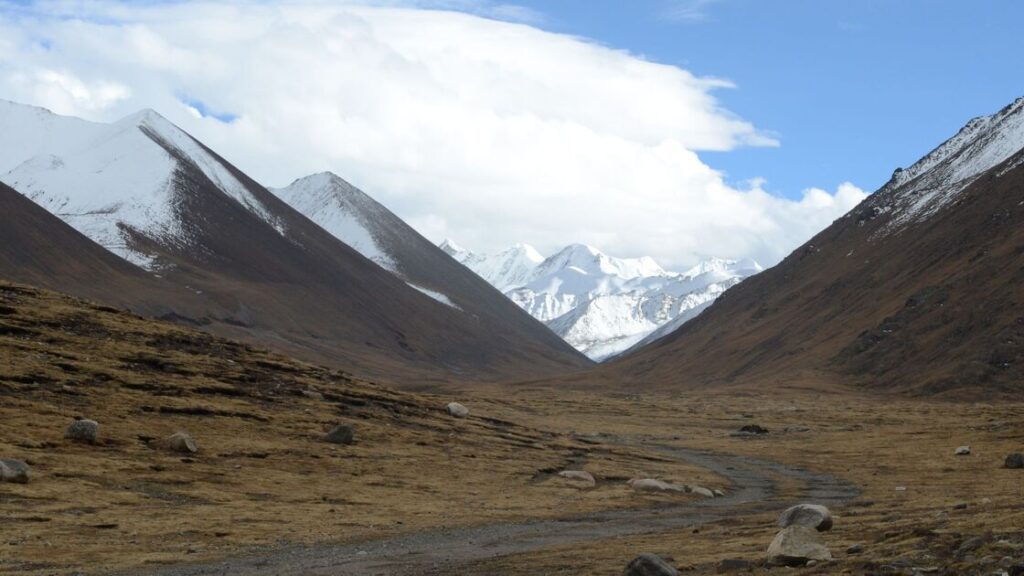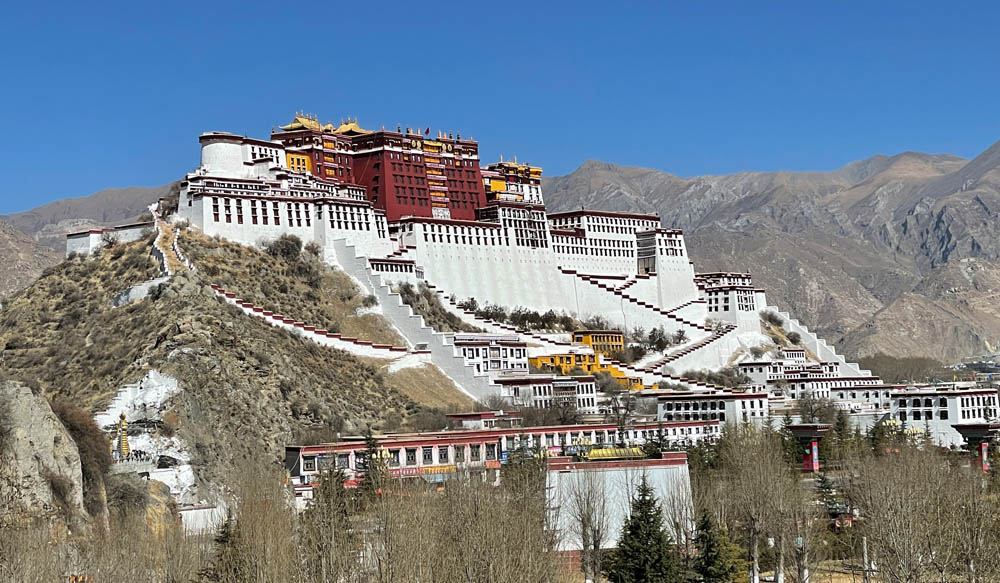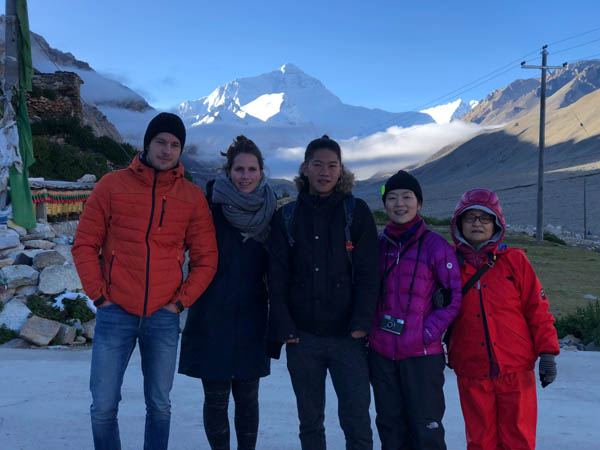Tibet is known for its rugged, awe-inspiring landscapes, spiritual depth, and centuries-old traditions. While most tourists flock to this mystical region during the warmer months, winter offers a unique opportunity to experience Tibet in a quieter, more introspective light. During this time, the usual crowds thin out, and the landscape becomes even more spectacular, with snow-capped mountains, frozen lakes, and a crisp, clear atmosphere.

Visiting Tibet in winter doesn’t mean you have to miss out on incredible travel experiences. In fact, winter offers some of the best opportunities for exploration, reflection, and adventure, thanks to the stunning natural beauty and tranquil atmosphere. Whether you’re a seasoned trekker, a culture enthusiast, or someone seeking spiritual peace, winter in Tibet offers a wide range of activities that let you immerse yourself in the magic of the region.
In this blog post, we will explore the best travel activities in Tibet during the winter months. From snow-capped mountain treks to cultural festivals, here’s a guide to make the most of your winter trip to the Roof of the World.
Why Winter is a Great Time to Visit Tibet
Before we delve into specific activities, let’s first explore why winter is an ideal time to travel to Tibet.
1. Fewer Tourists: Winter is Tibet’s off-season, so the usual crowds of tourists thin out significantly. This allows you to explore Tibet’s iconic sites, such as the Potala Palace and Jokhang Temple, in a more peaceful and intimate setting. You can take your time, reflect, and truly connect with the places you visit.
2. Winter Landscapes: Tibet’s dramatic landscapes become even more beautiful in winter. The snow-capped peaks of the Himalayas, frozen lakes, and stark, pristine nature create a sense of serenity and wonder. The crisp winter air offers clear skies and stunning views, making it an ideal time for photography and outdoor activities.
3. Cultural Events: Winter marks the Tibetan New Year (Losar), a significant religious and cultural celebration. Participating in this vibrant festival allows you to experience Tibetan customs, rituals, and traditions in an authentic setting.
4. Affordability: Since winter is the off-season, travel costs—especially accommodation and guided tours—are often more affordable, making it a budget-friendly time to visit Tibet.

Best Travel Activities in Tibet in Winter
1. Trekking in Tibet’s Majestic Landscapes
Tibet is a trekker’s paradise, and winter provides an opportunity to experience the region’s wilderness in all its untouched glory. While trekking in the colder months can be more challenging due to snow and freezing temperatures, the reward is unparalleled in terms of peace, serenity, and jaw-dropping views.
Mount Everest Base Camp Trek
One of the most iconic trekking routes in the world, the Mount Everest Base Camp trek takes you to the foot of the highest mountain on earth. Winter adds a unique dimension to this trek, as the snow transforms the landscape, and the views of Everest and surrounding peaks are even more dramatic against the winter sky.

In winter, the trek is less crowded, meaning you can enjoy a more peaceful journey through the Khumbu region. The higher altitude and colder temperatures can make the trek more difficult, so it’s important to be prepared with proper gear and acclimatization.
• Best Time for Trekking: Early winter (November-December) tends to have milder temperatures, while January and February are colder, but offer stunning, clear views.
• What to Expect: Snow-covered trails, fewer trekkers, and breathtaking views of Mount Everest and surrounding peaks.
The Tsurphu to Yangpachen Trek
This relatively short and accessible trek takes you from Tsurphu Monastery to Yangpachen, a region known for its geothermal hot springs. The route offers stunning views of snow-capped mountains, alpine meadows, and the chance to experience Tibetan monastic life up close.
Winter in this region is peaceful, with fewer trekkers around and the opportunity to enjoy the serene atmosphere of the high Tibetan plateau. The geothermal hot springs in Yangpachen are especially welcoming in the cold winter months, offering a unique way to warm up and relax after your trek.
• Best Time for Trekking: November to February, when the area is quieter and the natural hot springs are a great respite from the winter chill.
• What to Expect: Beautiful views of the surrounding mountains, the chance to visit Tibetan monasteries, and the soothing hot springs of Yangpachen.
2. Cultural Exploration of Lhasa
Lhasa, the capital of Tibet, is a must-visit destination for anyone traveling to the region. The city is home to some of Tibet’s most sacred religious sites, and the winter months offer a peaceful, contemplative atmosphere that is perfect for cultural exploration.
Potala Palace
The Potala Palace, once the residence of the Dalai Lama, is a stunning architectural marvel and one of the most iconic landmarks in Tibet. In winter, you can explore the palace without the crowds that typically fill the summer months, allowing you to appreciate its incredible beauty and historical significance.
The palace is a symbol of Tibetan Buddhism and has deep spiritual and cultural importance. Visitors can explore the grand rooms, chapels, and prayer halls, learning about Tibet’s religious history and experiencing the tranquility of the space.

Jokhang Temple
Another spiritual highlight in Lhasa is Jokhang Temple, Tibet’s holiest temple. In winter, you’ll see fewer tourists, allowing for a more intimate experience. You can watch pilgrims perform their prostrations and circumnavigate the temple while soaking in the sacred atmosphere.
Jokhang Temple is a perfect place for quiet reflection, and it also offers a deeper understanding of Tibetan Buddhism. The Barkhor Circuit, a street that surrounds the temple, is also worth exploring for local Tibetan handicrafts and spiritual items.
Sera and Drepung Monasteries
For those seeking to experience Tibetan monastic life up close, a visit to the Sera and Drepung Monasteries is a must. These monasteries are known for their traditional debate sessions, where monks engage in philosophical discussions. In winter, the debates are less crowded, and you can observe the monks in a peaceful setting.
• What to Expect: In-depth experiences of Tibetan Buddhist culture, quiet walks through Lhasa’s spiritual sites, and a chance to engage with Tibetan monks.
3. Spiritual Pilgrimage and Meditation
Winter is an ideal time to connect with the spiritual energy of Tibet. The quieter season provides the perfect backdrop for those looking to engage in self-reflection, meditation, and spiritual practices. Whether you’re visiting sacred lakes or hiking near holy mountains, Tibet’s serene landscapes lend themselves to deep meditation and prayer.
Kora around Mount Kailash
Mount Kailash, regarded as one of the most sacred mountains in the world, attracts pilgrims from all over Asia. A Kora (pilgrimage circuit) around Kailash is one of the most transformative spiritual experiences you can have in Tibet. While the trek around the mountain can be challenging due to cold weather in winter, the experience of walking in the footsteps of pilgrims and reflecting on the sacredness of the land is deeply moving.

If trekking around Kailash seems too difficult, you can still visit the area in winter to meditate at the base of the mountain, soaking in its spiritual energy and immersing yourself in the peace and solitude of the region.
Meditation at Namtso Lake
Another serene spot for meditation is Namtso Lake, one of Tibet’s holiest and most beautiful lakes. The lake freezes in winter, transforming into a tranquil expanse of ice surrounded by snow-covered mountains. The stillness of the frozen lake makes it a perfect place for contemplation and meditation, allowing you to connect deeply with the natural beauty of Tibet.
• What to Expect: The opportunity for solitude, meditation, and spiritual reflection in some of Tibet’s most sacred locations.
4. Tibetan New Year: Losar Festival
If your winter trip coincides with the Losar Festival, you’ll have the chance to witness one of Tibet’s most important cultural celebrations. Losar marks the Tibetan New Year and is a vibrant celebration full of traditional rituals, prayers, and festivals. The winter months leading up to Losar are filled with preparations, and when the festival finally begins, the streets come alive with music, dance, and colorful ceremonies.
Participating in the Losar celebrations provides a unique cultural experience, offering insight into Tibetan customs, food, and spiritual practices. The festival is a joyful occasion and offers the chance to connect with local Tibetans and understand their religious and cultural heritage on a deeper level.
• What to Expect: Traditional Tibetan dances, rituals, and a unique cultural experience that’s deeply rooted in spirituality and Tibetan customs.

5. Wildlife and Nature Exploration
Tibet is not just about its cultural and spiritual riches; it also offers some incredible opportunities for nature lovers and wildlife enthusiasts. Winter is an excellent time to spot Tibetan wildlife, as animals like the Tibetan antelope and wild yaks are often visible in the region’s remote areas.
Wildlife Safari in the Tibetan Plateau
The Tibetan Plateau is home to a variety of unique and rare animals, many of which are adapted to the harsh winter conditions. A winter wildlife safari gives you the chance to see these majestic creatures in their natural habitat. Be sure to bring a good camera, as the animals are often most visible against the stark, snow-covered backdrop.
• What to Expect: Rare wildlife sightings, stunning natural landscapes, and the chance to explore the unspoiled wilderness of Tibet.

Conclusion: A Winter Wonderland Awaits
Tibet in winter is a land of contrasts—frozen lakes, sacred mountains, vibrant festivals, and ancient monasteries. The activities available during this time allow you to dive deep into the cultural, spiritual, and natural beauty of the region. Whether you’re trekking in the Himalayas, exploring Lhasa’s spiritual sites, or participating in the Losar Festival, winter in Tibet provides an intimate and profound way to connect with the Roof of the World.
So, pack your warmest clothes, bring your curiosity and respect, and get ready for a once-in-a-lifetime adventure through one of the world’s most mystical and enchanting destinations. Your winter journey to Tibet promises memories that will stay with you forever.

[…] meditating by sacred lakes, or walking the same paths as thousands of Tibetan pilgrims, Tibet in winter provides a profound opportunity to connect with yourself and the land in a way that few other […]
[…] Tibet is expensive. While it’s true that certain aspects of travel in Tibet can be pricey, a winter trip to Tibet can be surprisingly affordable—especially if you know how to plan a budget-friendly […]